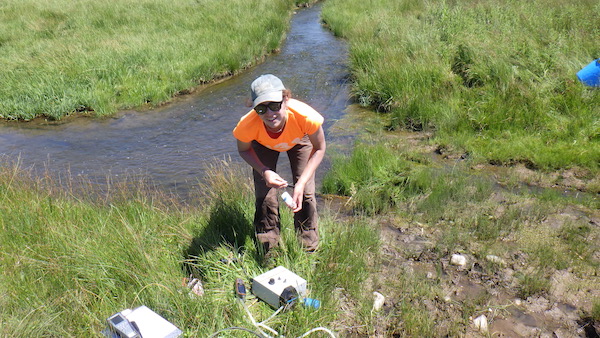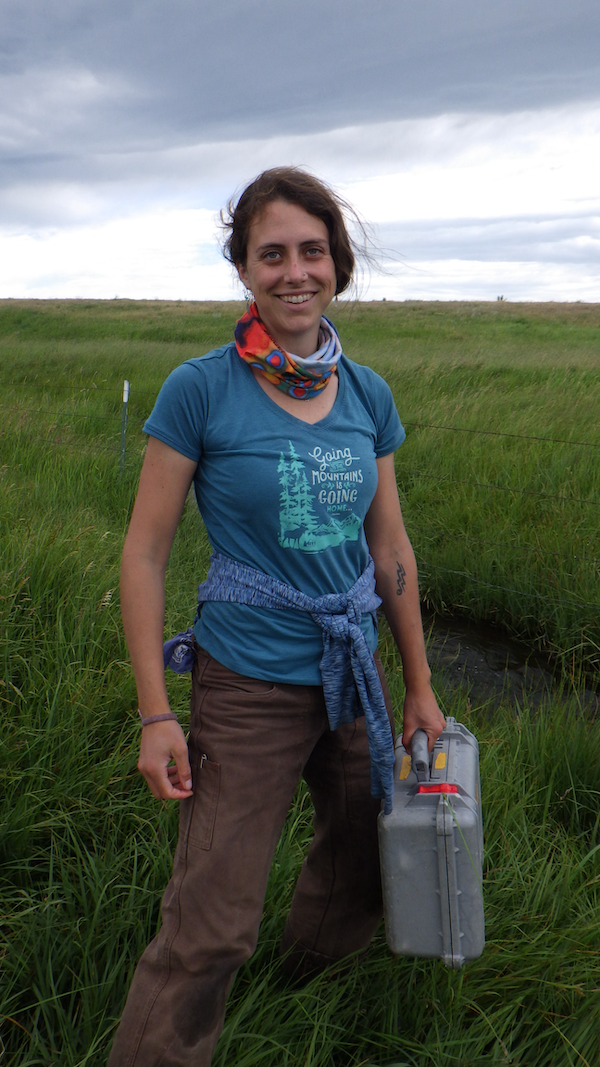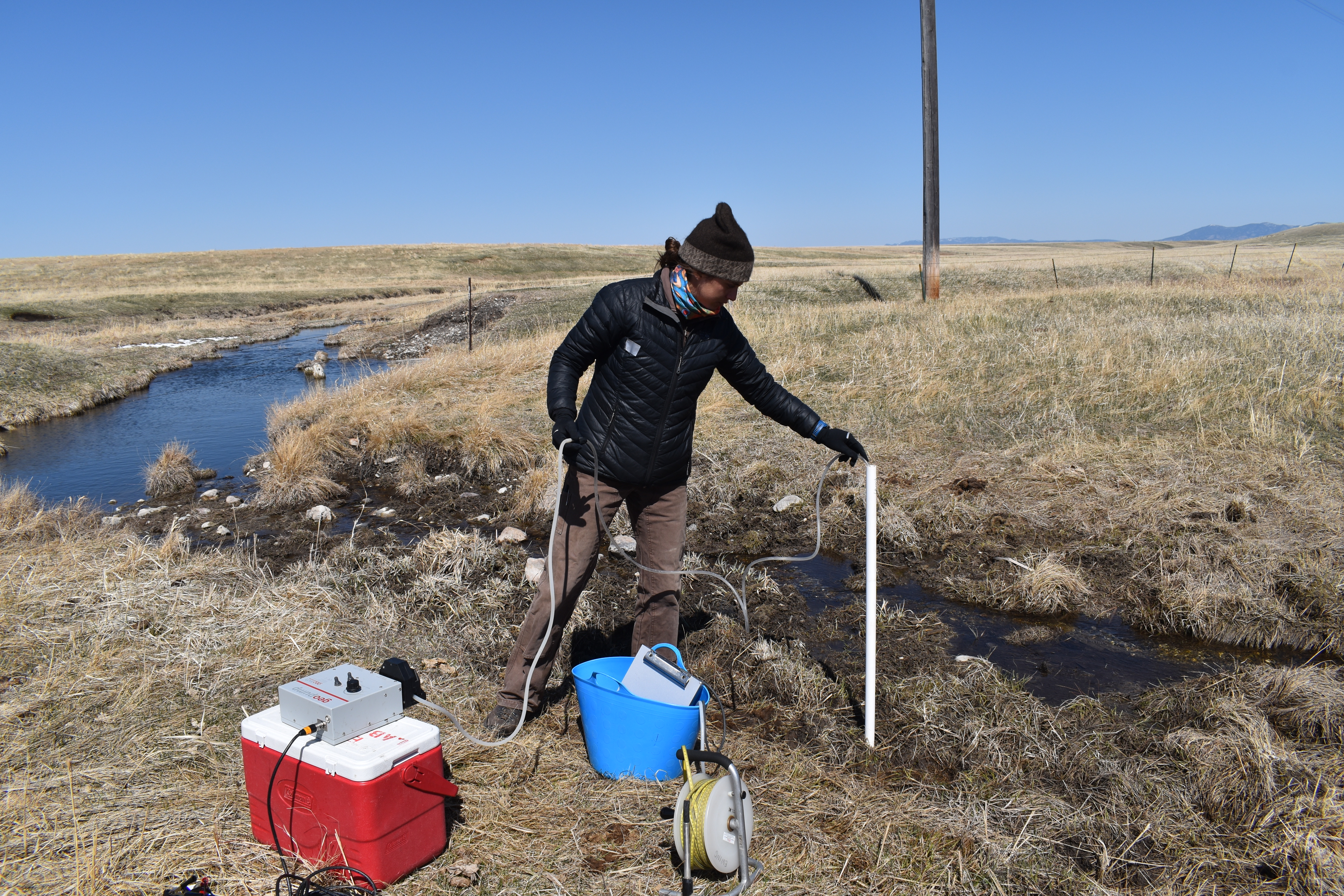Meet Caitlin Mayernik, a PhD student at Montana State University and a member of the EPSCoR Track 1 CREWS research team. In this interview, Caitlin shared information about her work, studies and career pathway with the Montana Girls STEM Collaborative, an outreach program of Montana NSF EPSCoR. Her interview is reprinted here in order to share career pathways with young people in Montana. You can subscribe to the Montana Girls STEM Collaborative newsletter at http://bit.ly/mtgirlsstem-news

What is your name, what do you do and where? Where did you grow up?
My name is Caitlin Mayernik, I am a Ph.D. candidate working on my graduate degree in Ecology and Environmental Science at Montana State University.
I grew up in Silver Spring, Maryland in a suburb of Washington D.C. and did my undergraduate in the foothills of the Appalachian Mountains where I discovered the power of community connection with nature that drove me to establish roots in Montana.
What do you do for your research and studies?
 I work as a graduate research assistant investigating how chemical reactions play out in soils and shallow groundwaters and how these reactions are influenced by environmental factors such as land use, hydrology, geology, and soil microbes.
I work as a graduate research assistant investigating how chemical reactions play out in soils and shallow groundwaters and how these reactions are influenced by environmental factors such as land use, hydrology, geology, and soil microbes.
My research aims to understand how soil and riparian ecosystems process nutrient loads to help improve water quality. I think a lot about the nitrogen cycle and how it is influenced by agriculture practices in the Judith River Watershed. My work is part of a much larger research group focused on understanding the impact of human activities, such as mining and agriculture, on water quality across the state of Montana.
Working on such a diverse team has exposed me to many facets of water quality research and expanded the way I think about my study system and discipline.
My work is very much field-based, which means I spend a lot of time outside (yay!) walking through riparian corridors (the vegetated areas next to streams) with pumps and sample bottles to collect water samples. I use environmental waters as a means to gain insight into soil processes. Once I’ve collected my water samples, I bring them back to the lab for analysis. My samples are run on at least five different instruments to understand their chemical composition. Matching the chemical results from the lab with the field context of where the sample was collected allows me to begin to understand what is going on in the soils across space and time.
Processing my results requires computer programming skills, which I didn’t learn until graduate school. It was very challenging to learn how to understand and write a coding language, but once I did, I discovered how powerful it is for processing and organizing my data.
I also use code to make beautiful graphs that help communicate my results, which I really enjoy.
What did you like to do as a young person? At what age and how did you know you wanted to be a scientist?
As a young person I really enjoyed solving problems and building things (like matchbox building sets!). I loved learning how things work and why. I also loved learning about other people’s stories through reading books and asking questions. I enjoyed playing sports and loved swimming in the ocean.
I probably didn’t know I wanted to be a scientist until high school when I started watching the Planet Earth documentaries. It was through this documentary series that I began to understand the not-so-great state of some of our environmental systems and the role we, as humans, play in both degrading these systems AND the power we have to remedy and conserve them. I became inspired by the resiliency of ecosystems and motivated to help fix those that were degraded. This budding passion paired well with my love for water, and led me down a winding path investigating water quality connections to humans use of the landscape.
I also always did well in science and math classes, so in my rational brain it made sense to pursue science as a career. Although, I did change majors three times in undergrad before finding the science that felt right to me, and I always enjoyed classes in creative writing, sociology, as well as studying abroad.
Who were some of the role models, mentors or other adults who influenced you as a young person?
My parents and family always encouraged me to try new things and supported me through school, sports, and things I wanted to do that might have been unfamiliar to them.
My high school calculus and biology teachers and volleyball coach took time to get to know me as a person and talk to me as a person. The patience and encouragement they showed me was incredible.
My undergraduate major advisor and honors college advisor always made time for me, listened to issues I was facing, pointed out what I could work on improving, and generally provided me with incredible mentorship.
What advice would you give to a Montana young person who is interested in a career like yours?
Remember that science is not linear (it is very sinuous, like a river) and it is not isolated from other disciplines, so we, as scientists, need to be flexible in changing course and learning from others along the way. My lifelong interest in other people’s stories allows me to learn a lot about human perceptions of the environment, why we do some of the things we do, and how to make science relevant to folks of different backgrounds. Learning the history of a place through others experiences helps me think through the cause and effect of the chemical signals I’m seeing in my water samples – it gives me a more holistic view of what’s going on in these environmental systems and why.
Ask questions! And ask more questions. Learn to admit that you don’t know something, it is truly how we learn.
Be confident in your resilience. We all have the ability to change course and overcome obstacles, despite how scary and challenging the unfamiliar may seem.
